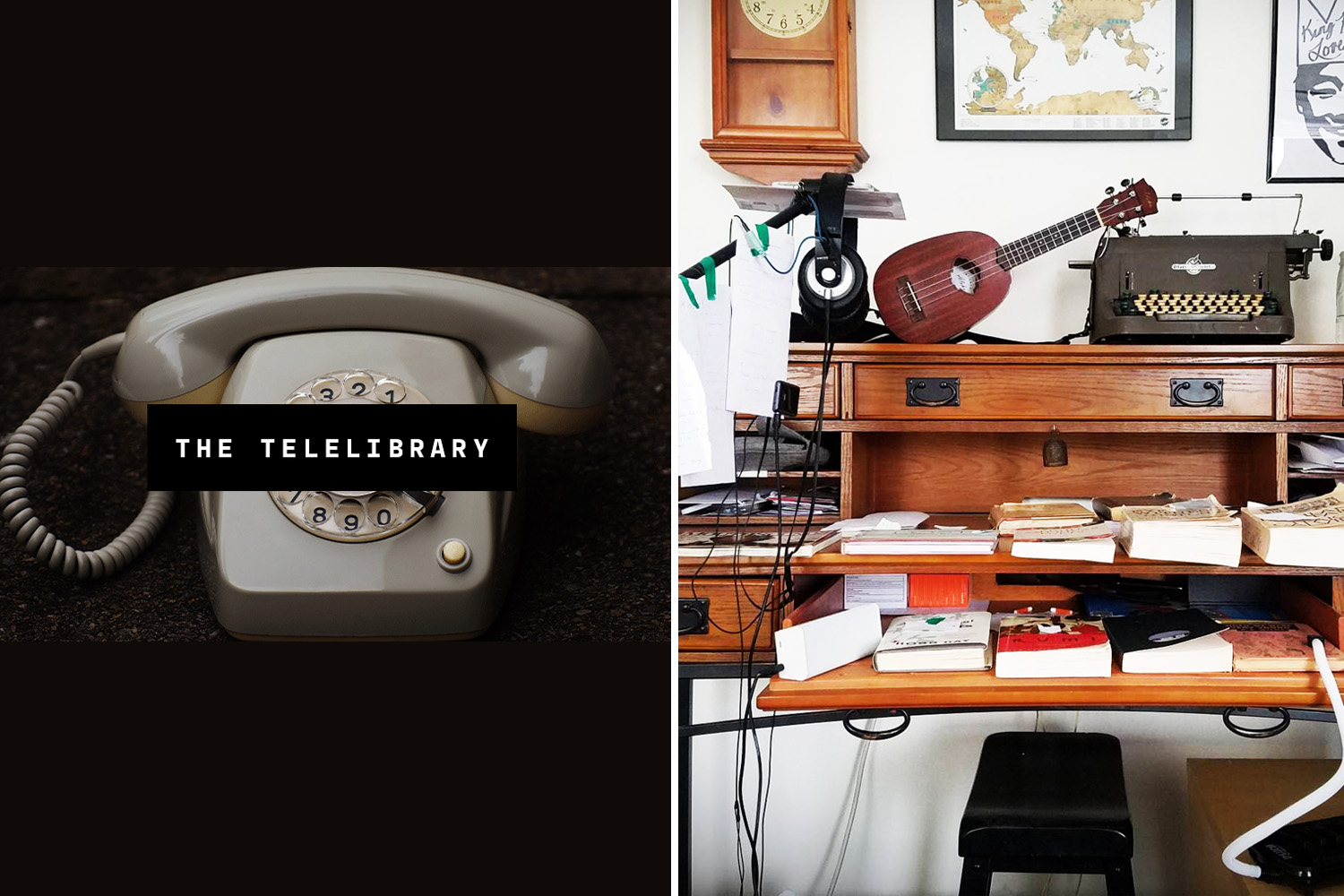So much of the conversation around experiences centres on how to scale them, making them bigger, and therefore – so the thinking goes – better and more profitable.
But what can we learn from “small” experiences – those that lean into intimacy, centre the participant as a co-author of meaning, and facilitate true connection?
Rather than being obsessed with numbers, perhaps we need to think of value as accruing not only when we grow in size, but also when we deepen the impact of our experience on those who go through it: a kind of transformative value, if you will.
So for our cosiest Campfire yet, we invited Yannick Trapman-O’Brien, performer and theatremaker, to share insights on the outsize value of small experiences gained from his telephone-based, one-on-one, interactive experience, The Telelibrary.
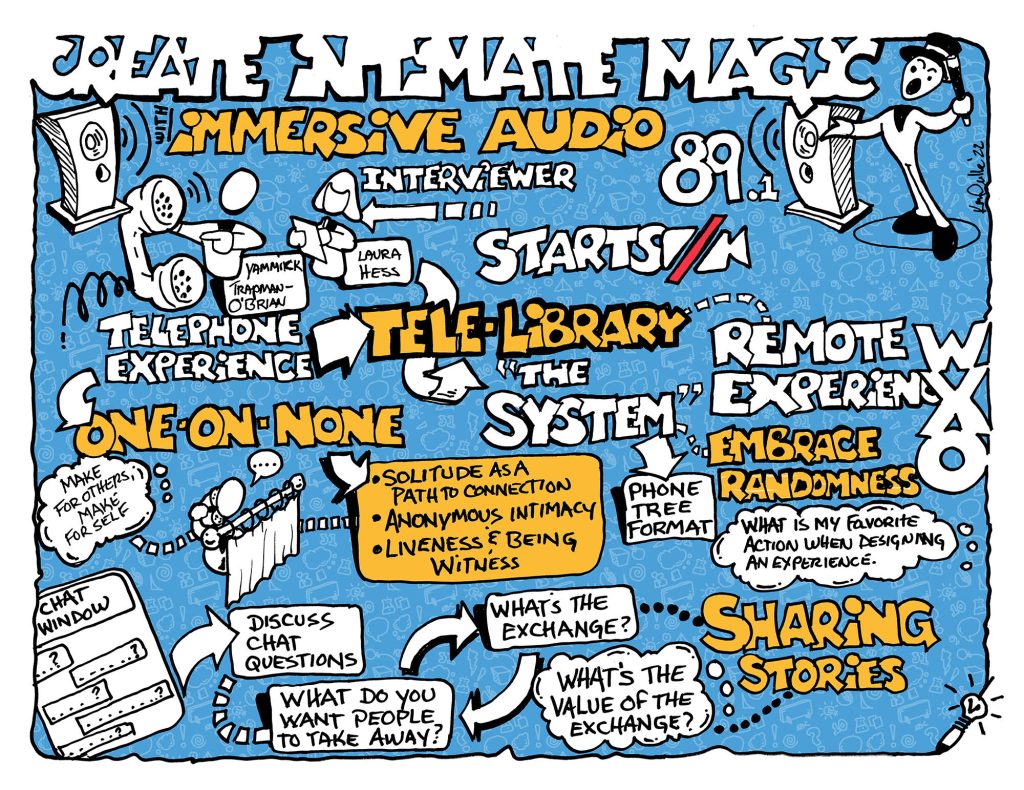
The Telelibrary was conceived in the earliest days of the pandemic in March 2020, growing from a casual experiment among friends to a formal experience where strangers register online, call a number, and pay what they want when they’re done. And while Covid may have been the trigger for remote, audio-only experiences like this, the opportunities they present are far more wide-ranging and exciting.
Now in 2022, Trapman-O’Brien has taken 1,423 calls from 1,039 user IDs. Some have called once; some more than 25 times. Users are also given the option to not only access a back catalogue of recorded stories, but to also record their call, leave messages for future participants, and add to the “System” of The Telelibrary. The project now consists of over 12GB and thousands of hours of audio of people telling stories, reading books, and playing together and alone.
“The Telelibrary is whatever you experience it to be on one call. Instead of a model where I’m trying to build something larger by taking individual components and presenting a piece, I’m doing the opposite: amassing components for the purpose of constructing one’s call collaboratively with me.”
Yannick Trapman-O’Brien
One person who understands the revelatory nature of The Telelibrary is experience strategist and No Proscenium Arts Editor Laura Hess, who joined Trapman-O’Brien to unpack her experience of the piece and pull out wider insights that can be used by experience designers in all sectors.
We invite you to make yourselves especially cosy before you read on, just as we did at the beginning of this Campfire – whether that means a mug of tea, a glass of wine, or the snuggliest blanket within reach.
Are you sitting comfortably?
Then we’ll begin…
The “One-On-None” Experience
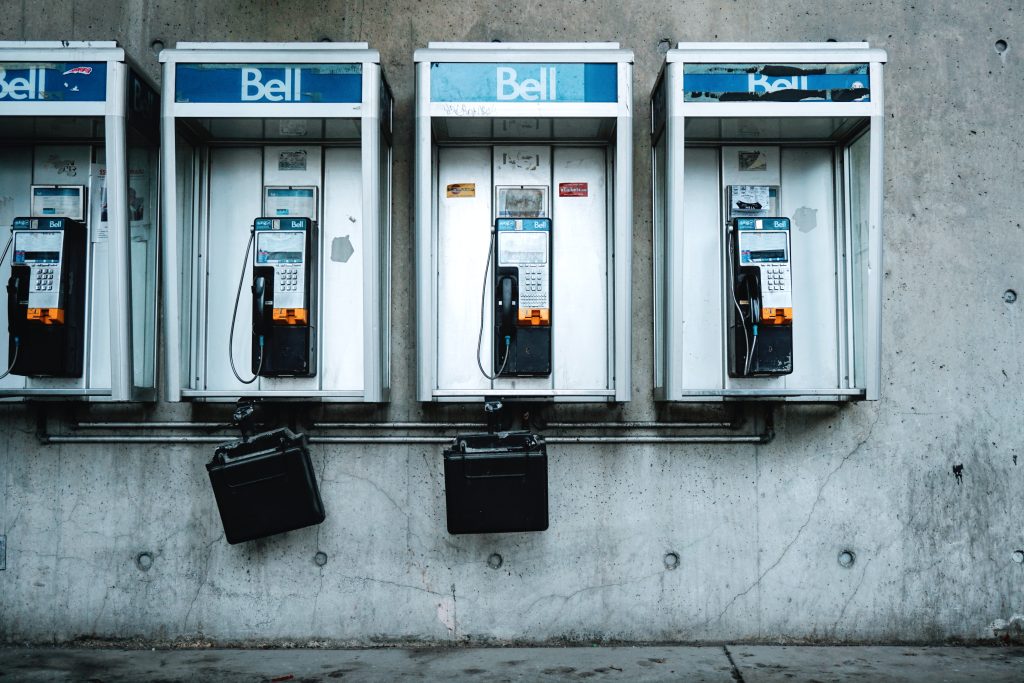
The initial aim of The Telelibrary was to create a remotely accessible, one-on-one experience between Trapman-O’Brien and the participant. However over time, this evolved to become not just a one-on-one, but a “one-on-none” experience where the user, not the creator, shapes the journey they go on.
“I’m just a glorified speaking spell; the densest AI you can imagine. I’m trying to learn from you.”
Yannick Trapman-O’Brien
The phone call becomes a space where the user is the only person there, and the only one making active decisions. Therefore, the experience fully belongs to them: they create it through their choices.
Co-creation and interactivity are often invoked as the guiding principles for experience design, but how often are you willing as a creator to hand over control in this way, with all the vulnerability and risk that it entails?
Maddeningly few details about what the experience will include are available beforehand, so people come into it with as few expectations as possible. They might see it as therapy, or as a mystery to be solved. It’s therefore all of these things.
“It is what you make it, and you make it part of what it becomes for the next person.”
Yannick Trapman-O’Brien
The Safety To “Disconnect To Reconnect”

For Hess, this co-creation of the boundaries of the experience resulted in some surprising, moving and revelatory moments.
When the pandemic hit, she had leaned into all kinds of remote experiences and found those that were audio-centric to be particularly effective, impactful and unique.
The first time she did The Telelibrary, she laughed continuously.
“I didn’t understand the world, but I felt comfortable with this uncertainty. It didn’t feel like poor design or an unsafe experience.”
Laura Hess
The second time, she had some unexpected emotional moments.
“Through this exchange with the System, I was able to have a fragmented experience with myself, about myself. I realised that audio-centric experiences like this made me able to reconnect with myself through a disconnection with myself.”
Laura Hess
The anonymity, intimacy and autonomy of the format created a degree of psychological safety that meant that Hess was able to feel both protected and free to explore the world she was creating, as well as aspects of herself.
And whether we’re creating immersive theatre or a completely different kind of experience, there’s incredible value in being able to allow people to explore it fully and without fear.
Solitude As A Path To Connection
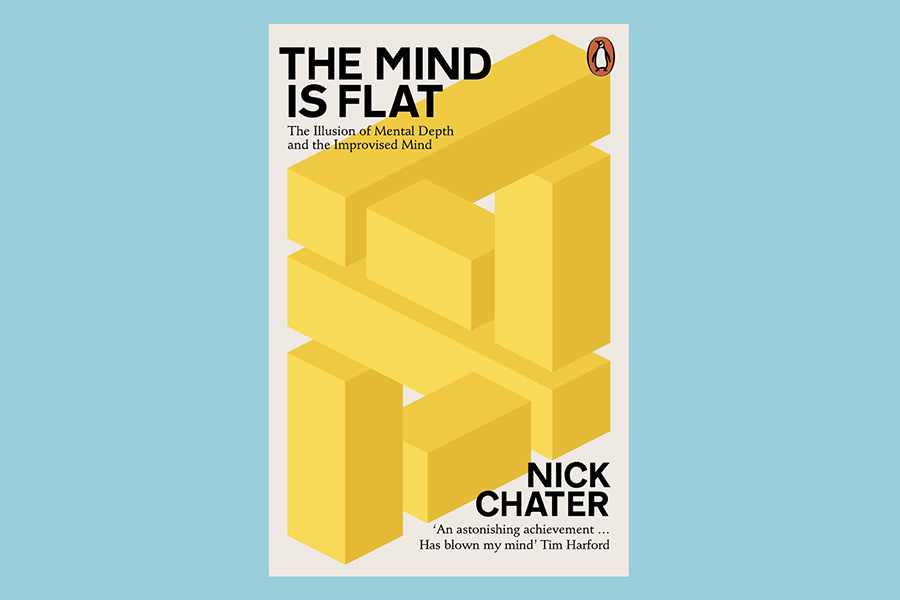
Within The Telelibrary, by making this meaning for yourself, you also inadvertently begin to make the experience more meaningful for others.
To enable this connection, Trapman-O’Brien sees his role as creator as “getting the experience out of the way on someone’s path to creation”.
“When you’re in an experience, there’s a pressure to perform – am I following the rules? Am I playing the game correctly?
But as a human being, you automatically create content – by having a conversation, telling stories, and making connections.
So as an artist, my challenge is: how can I get the experience out of someone’s way on the path to creation? How can I get someone to inhabit the space without thinking that they have to be anything? What if you didn’t have to be anything, but just respond?”
Yannick Trapman-O’Brien
This reminds us of the concept in neuroscience that the “self” is shallow or even non-existent (see The Mind Is Flat by Nick Chater and The Self Delusion by Tom Oliver). As suggested by immersive experience-maker Jessica Creane, we should enable people to create identity in the moment in what she calls “roleless roles” – a topic we’ll unpack in a future Campfire.
Within the context of The Telelibrary, the piece begins as a service – you’re given a phone tree with each branch leading to a book excerpt. As you start accessing them and things come up, you have the invitation to talk about what they mean to you. You are the author of the space.
“As creator, you don’t have to be all-knowing: you can create a container where people can begin to encounter the crystallisation of other people’s experiences and understanding of the space. These can be viewed as not only meaningful stories, but also as something you identify with.”
Yannick Trapman-O’Brien
Just as books are a place we go both to be alone and to feel closer to other people, within solitude we can find connection.
Each participant’s response is a story, an opportunity to look back on the experience, and way to share it with people who are not there.
“Anonymity is so important to create security so you can be seen, but by people who are not there. You have the opportunity to exist in relation to others in draft. Now I understand I’m going to be seen, what do I want to pass on?”
Yannick Trapman-O’Brien
The Designer As Witness, Not Creator

The realisation that his role was to be a guide and witness rather than an arbiter of meaning was a gradual one for Trapman-O’Brien, who discovered the power of relinquishing control over time.
“At first I thought I could be a good emotional DJ, but I realised that I am not better than chance. I can’t understand someone perfectly psychologically over the phone, so the strongest choice I can make is to offer you a choice. People are larger than I think.”
Yannick Trapman-O’Brien
If we make the meaning for someone, it doesn’t belong to them. But if we give them ownership of it, they can begin to claim the story for themselves.
“The goal for participants is to feel like ‘I moved myself today’. I’m not just making selections within the System, but doing it for and with myself.”
Laura Hess
The Outsize Value Of Small-Scale Transformation
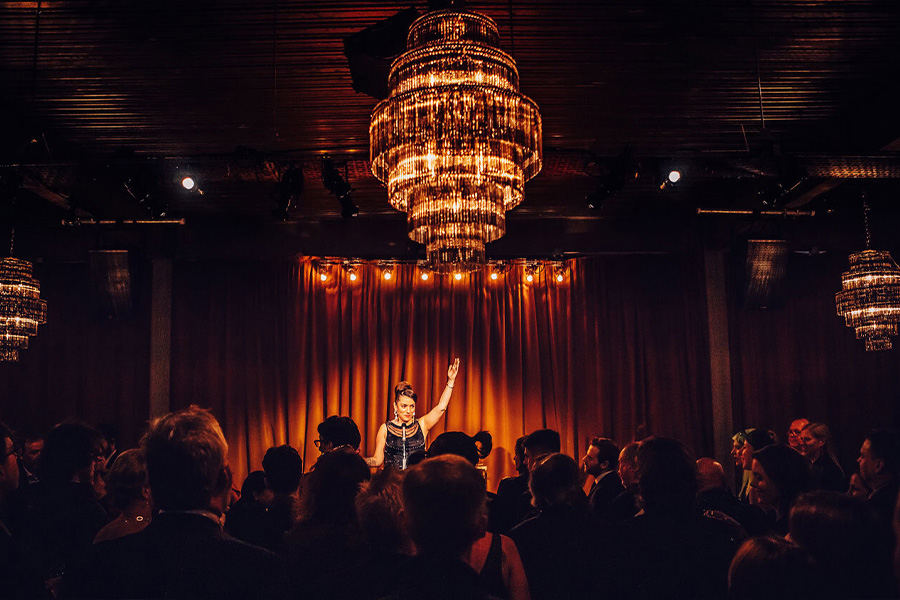
There’s a misconception that due to the one-on-none, individual nature of The Telelibrary, the experience cannot scale up, as it’s limited to the number of performances that Trapman-O’Brien can facilitate. Unless more performers are added or the content is automated – by AI, for example – the opportunities for growth are finite.
However, this belief depends on how we define scaling up. According to Trapman-O’Brien, the experience may not have increased in the number of performances, but has absolutely grown in value, impact and meaning.
“I had the chance to iterate and develop almost 1,500 times with audiences in real time, so the value of the experience grows. Over the years, the average payment has crept up too, as people form a more meaningful relationship with – or encounter for the first time a more meaningful – System. The value of their contribution scales up over time.”
Yannick Trapman-O’Brien
As Hess explains, this is “a different kind of crop with a different kind of yield.” It’s transformation, but on a small, individual scale.
However, there seems to be a belief that experiences should be trying to create transformation on a mass scale. Is this something we should be aiming to do within massive experiences – and is it even possible?
The degree of transformation we can achieve in a small experience may not always be possible at scale. But perhaps we can make space for them within the context of a larger experience.
“If you want the same impact, risk everything! You can live in a world of massive experiences and IP, and still give people the opportunity to change their own life or story by making a space within it that belongs to them.
Of course, this involves stakes – how will you manage this? But we can’t make truly transformative experiences with risk-flavoured ice cream.”
Yannick Trapman-O’Brien
This makes us think of the huge worlds created by Disney or Marvel, for example, and the miniature worlds fans create by writing their own fiction within them. Or the way that Secret Cinema allows participants to build their own character and backstory before attending the actual event, often based on well-known IPs and narratives like James Bond or Guardians of the Galaxy.
The Telelibrary even has its own self-created fan community, “The Conspiracy”, who joined together to try and plot ways to access “number 19”, an additional choice on The Telelibrary’s main menu that cannot be accessed by one individual alone. The Conspiracy meets on Discord and is completely separate to Trapman-O’Brien, who never interacts with it.
“The people who are most invested in the space created a community, and this now happens in a cycle. A function of intimacy is that you and any other person could choose to enter into an exchange, and if you create a space grounded in care, it primes people to approach each other.”
Yannick Trapman-O’Brien
The Difference Between Exchange And Interactivity

Most immersive experiences have some element of interactivity built into them. But could we deepen the value of an experience by asking participants not only to interact with it, but by being upfront about what we want in exchange?
Trapman-O’Brien’s early work began in creating exchanges, for example by telling other people’s stories.
“However, it was brought to my attention that I have no right to tell other people’s stories. If I want to create experiences where people wrestle with the biggest moments of their lives, what do I have to give them in exchange?”
Yannick Trapman-O’Brien
He now operates on an invisible 60/40 split, where the participant gives 60, and he gives 40 to position them for success as long as they show up and interact.
“Interactivity is when you make choices that affect the outcome. In an exchange, I’m clear about what it is I want. Often in experience design we set up and hope someone will tell us about their childhood dreams, but what if we asked for them?”
Yannick Trapman-O’Brien
Experience design isn’t only about creating something that is viable and sustainable, but also profound. To create this intimacy, you need to embrace risk and vulnerability.
“When you get explicit about the value of someone’s contribution, it opens a space where they have a choice whether or not to do it. When they have a choice, they share more meaningfully and pay more than I would have asked. It’s giving them the choice to be more generous.”
Yannick Trapman-O’Brien
Real choices have the capacity to be both meaningful and scary. This might end up with someone feeling dissatisfied with the experience, but it can still be a meaningful one.
“I’ve had people who were profoundly unhappy and left a huge contribution, as it was so meaningful. They look back on the experience and realise that the story they told was of someone who entered an infinite library, said they wanted to speak to the manager, ran past stacks of stories, eventually found the boss’s office, opened it up, and found a mirror. The Invitation is that you can be deeply unsatisfied, and all the choices you make are a story you can reflect on.”
Yannick Trapman-O’Brien
The WXO Take-Out
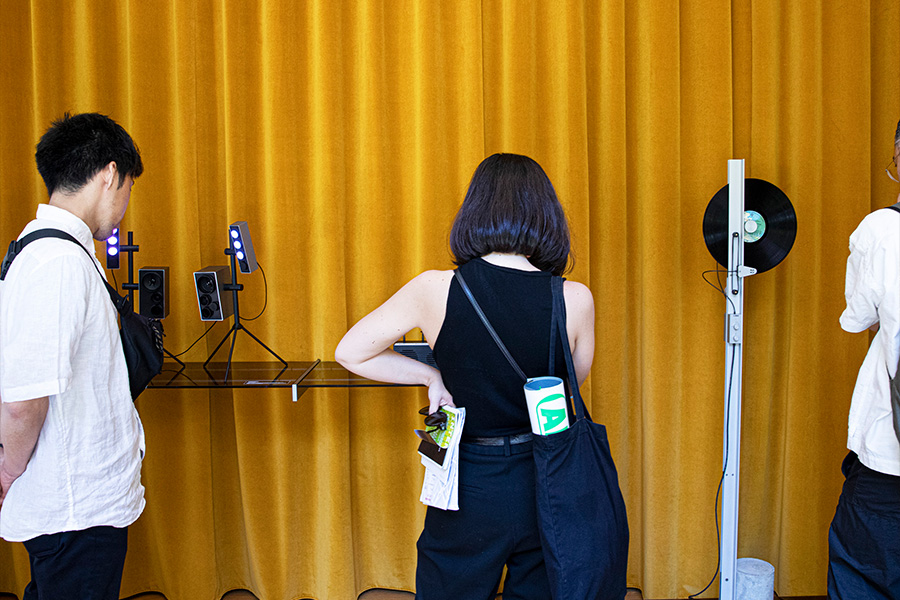
Audio-immersive formats might have seemed like a novelty that would die out after the pandemic, but it’s clear that the opportunities they’ve introduced have continuing relevance and resonance for experience designers everywhere.
Reducing the role of the creator to one of a witness, “dense AI” or “dumb rock” strikes us as quietly revolutionary. How can we “get the experience out of the way” to enable true creation from the participant, not just co-creation?
Thinking of scale in a more nuanced, expansive way also invites different ways of proving the value of our experiences. If we think in impact and transformation rather than numbers alone, how might we deepen the value and understanding of what we do? And how might we make space for small-scale transformation within the biggest of experiences?
So next time you’re creating an experience of any size, ask yourself:
- How could you introduce “anonymous intimacy”?
- How can you encourage participants to make their own meaning?
- How can you create disproportionate value for participants?
To continue the conversation, WXO Members can head to the topic on My WXO here.
To see the full line-up for the WXO Campfires Season 5, click here.
To apply to join the WXO and attend future Campfires, click here.

